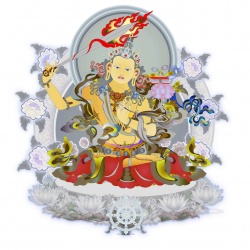Difference between revisions of "Jamchen Chojey"
m (Text replacement - "Three Temples" to "Three Temples") |
|||
| Line 20: | Line 20: | ||
Other valuable {{Wiki|cultural}} [[relics]] conferred by the court of the {{Wiki|Ming Dynasty}} include [[sutras]], figures of [[Buddha]] and [[magical]] instruments. | Other valuable {{Wiki|cultural}} [[relics]] conferred by the court of the {{Wiki|Ming Dynasty}} include [[sutras]], figures of [[Buddha]] and [[magical]] instruments. | ||
| − | Capable of accommodating eight thousand abbes, the [[monastery]] is collectively called with [[Ganden Temple]] and [[Drepung Temple]] as the Big Three Temples | + | Capable of accommodating eight thousand abbes, the [[monastery]] is collectively called with [[Ganden Temple]] and [[Drepung Temple]] as the [[Big Three Temples]] |
{{E}} | {{E}} | ||
[[Category:Sera Monastery]] | [[Category:Sera Monastery]] | ||
| + | [[Category:Je Tsong Khapa’s main disciples]] | ||
Latest revision as of 14:13, 5 April 2016
Jamchen Chojey, a disciple of Tsongkhapa went to the capital on behalf of Tsongkhapa, and later he was conferred to the title of Sakya Yeshe.
After he went back to Tibet, he built this monastery in order to offer sacrifice to the figure of Buddha and sutra.
Later the monastery was increased and expanded several times.
The smallest of the three colleges, it houses its founder Jamchen Chojey's statue in its chanting hall.
The set of sandalwood Arhats granted to the monastery is housed in this college.
For the sake of perfect preservation, they are encased in the bellies of a set of clay Arhats that have been authenticated as the original ones.
There are a lot of fine figures of Buddha, frescos, sutras, thangkas and sutra pillars, and a tapestry portrait of Jamchen Chojey.
Other valuable cultural relics conferred by the court of the Ming Dynasty include sutras, figures of Buddha and magical instruments.
Capable of accommodating eight thousand abbes, the monastery is collectively called with Ganden Temple and Drepung Temple as the Big Three Temples
